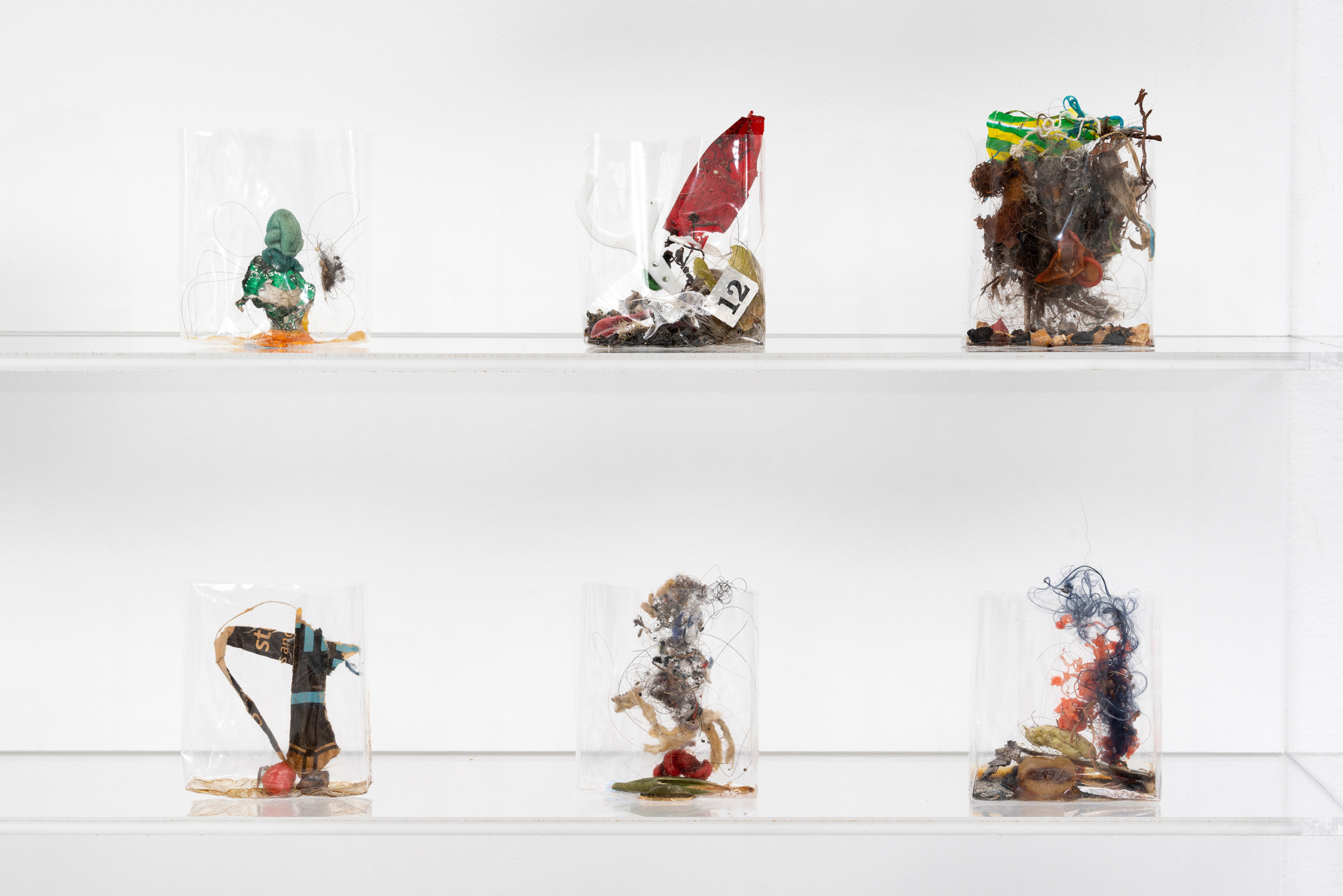
I was too young to experience the red-dot-on-sold artworks trope in action, but in Manhattan there was a time when artwork prices weren’t hidden but were actually affixed to the wall like a clothing hang tag, proudly bearing the work’s sold status or, alternatively, its availability. My only reference at least had room for a midpoint: It’s Complicated—a term I’m sure art dealers use to this day.
Art Basel Online’s second edition is my first. Only my toes are wet, and the prices seem drastically higher than I remember last time I bothered to check. In the simulated sales room of the viewing platform, transparency makes a return. The red dot has been replaced by a little gray “SOLD.” I see these appear throughout my VIP morning amble. The switch is the only proof I have that anyone else is here: the one who bought it and the one who flipped the sign.
What I’m pining for most at my inaugural digital experience is the collective faffing around that has historically annoyed me. My qualms about how a virtual platform might obscure the encounter with the art fade to a secondary concern. Alone in my bed desk, the art-viewing experience feels intimate, as if I was staring out from a booth-like hovel of an old-fashioned peep show. The detailed, high-resolution photographs offer perspectives I might not even have bothered to examine in real life. Maybe I’m acclimatizing more than I thought to my COVID-19 shopping routines.
An Egon Schiele drawing at Richard Nagy of a girl facing away from the camera is my spirit animal. I zoom in on her shoulder to see how her back becomes. My friend’s boyfriend, a Belgian collector, told me that in the early 2000s, it was possible to find a Schiele like this for tens of thousands of dollars. I imagine him somewhere in the virtual ether prowling the aisles. Are any other friends here?
On the other side of the glass, I discover some relief, and longing too. Taking a straw poll, I find that no one is bemoaning the lack of concrete floors, badge coordination, ambitious air conditioning, bathroom directions, restroom dawdlers, eight-hour days, constipation, dehydration, jetlag, LED lighting, tight quarters, taxing interlopers or plastic chairs. But who would?
The treasures lost in translation are harder to parse out but the theme is missed connections. “I miss the energy of the in-person engagement,” says Meg Malloy, Partner at Sikkema Jenkins & Co. “I miss the chance to show things in the closet and to talk to someone who does not know about an artist’s work in-depth.”
Operating the booth from their inbox and Art Basel Online’s back of house, willfully barefoot gallerists can see the visitors tick in and out of their booth, but they don’t get their names unless the viewer inquires about a specific piece. The automatically-generated email functions as a kind of guestbook. The messages that come through are genuine—facilitating interest and new conversations—not just hellos. Depth is not lost in the virtual world, but the serendipity, dealers confess on the phone, is that much of the traffic is direct; the collectors they already know skip the formality of Art Basel’s platform and head straight to the DMs.
I let other people sign in under my Art Basel account to get press preview access. I like the idea of adopting a secret identity to look at art. It’s easier to pull off with a password but I’ve also done it with the badges, turning comrades into “photographers.” My friend tells me she finds the online iteration more exhausting than the real thing, and I too am harboring nostalgia for the labyrinth-like structure of the fair and wondering how wrong turns could be built into a digital system.
Inter-gallery relations feel like another potential casualty of the virtual reboot. Working from home, gallerists can’t snoop on their neighbors nor share stories with their fellow sitters over drinks when the collectors finally go to bed. To my surprise, this apparently has resulted in a more concerted effort to connect with one another. Dealers spent a great deal of time conferring with colleagues on how the artists they share, as well as the ones they don’t, could be best presented online. This is visible to the viewer through observable trends. There’s a heavy streak of video, a medium traditionally ill-suited to the circus of the fair floor.
“I will definitely visit other galleries’ viewing rooms; it’s a good opportunity to learn and to see our colleagues,” says Malin Stähl of Hollybush Gardens in London. “I find that the crises have brought out a strong sense of comradery and a will to collaborate between galleries. I hope it is something we can keep alive once a new normal settles in.” I won’t be able to eavesdrop on those discussions, but I too hope that in the future of fairs and the art world there will be more one-on-one dialogues, not fewer. There are serious discussions to be had right now. I’m here watching you, ready to listen and look, more carefully than before.










 in your life?
in your life?

